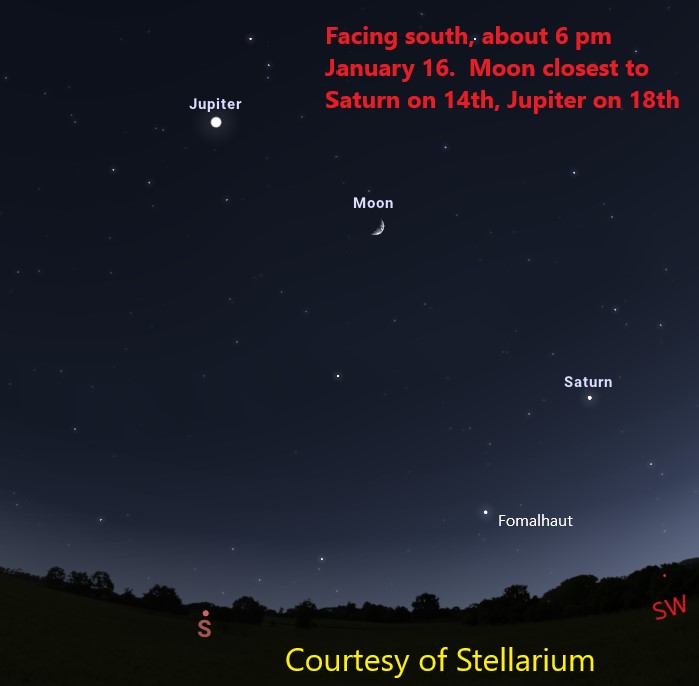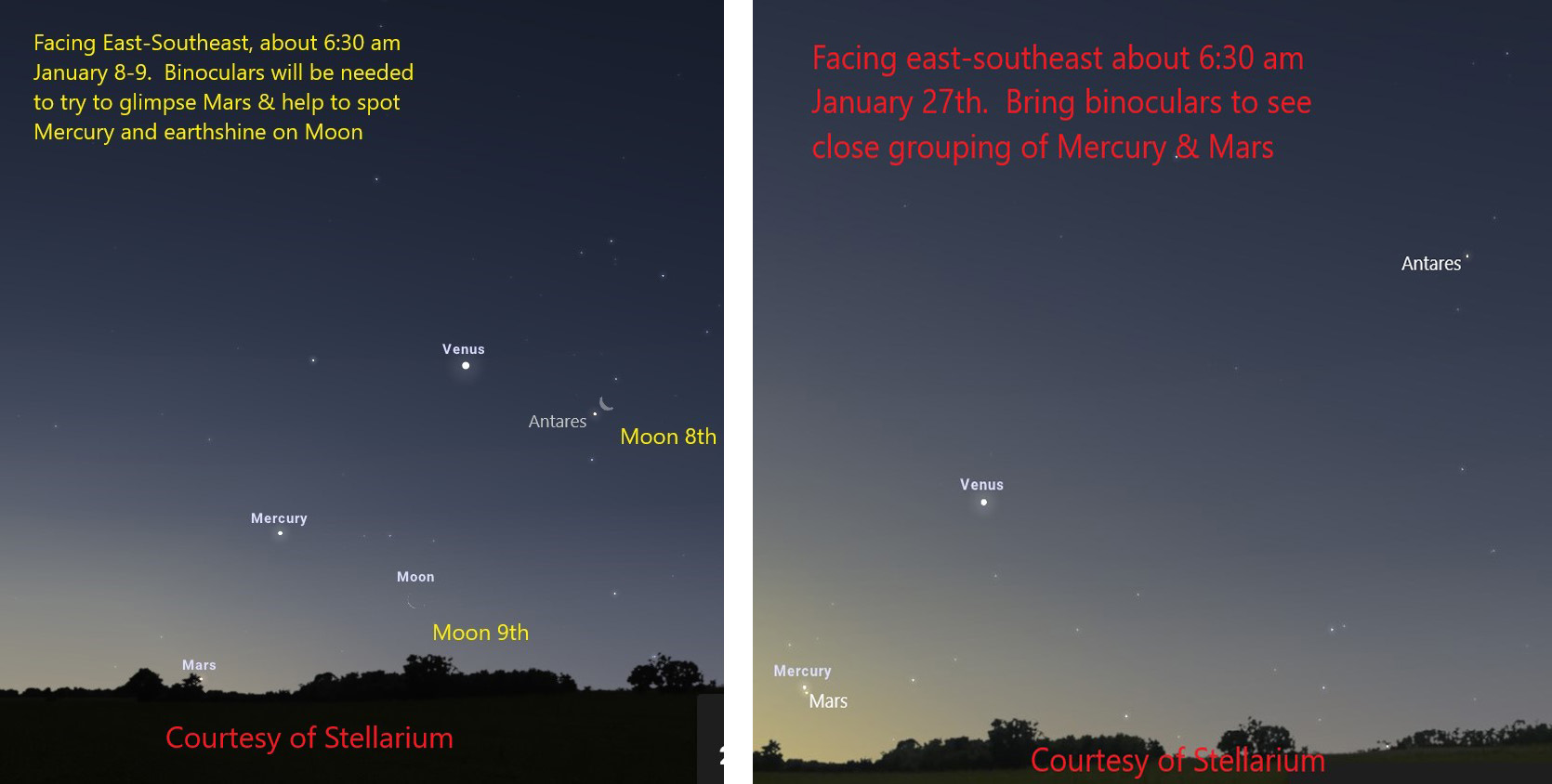DAWN & DUSK PATROL
The big highlight for the new year 2024 will certainly be the solar eclipse that will take place on April 8th. It will be the last total eclipse visible from any part of the continental United States until 2044, and the path of totality comes within 35 miles of Gateway Arch National Park. I will certainly discuss this eclipse in upcoming editions of this blog. In the mean time, January’s cold dusks and dawns offer some fine sights, some easy to see and others quite challenging.
Jupiter and Saturn, both kings of the Roman gods, have reigned over our evening skies for the last several months. They were both best seen in the fall as Earth passed them and now appear increasingly on the far side of the Sun, setting earlier and earlier in the evening. January will be the last full month of Saturn’s evening visibility, while Jupiter will hang on until the beginning of spring. To see them, just wait until the sky gets dark enough- around 6 or 7 pm. Jupiter is the brilliant object in the south, increasingly southwest and lower as the night goes on and the weeks pass. Saturn is the next bright “star” far to Jupiter’s lower right- don’t confuse it with dimmer Fomalhaut nearby. As shown in the image, the Moon passes through the area January 14-18. By the end of January Saturn will be getting quite low as it gets dark.
 Jupiter & Saturn adorn January’s southern and southwestern skies
Jupiter & Saturn adorn January’s southern and southwestern skiesVenus shines brighter than any other object in the sky except for the Sun and Moon. It also is appearing increasingly on the far side of the Sun but is seen before dawn. With each week, it will drop increasingly closer to the horizon if you look at the same time. Fortunately, in St. Louis, the Sun rises around 7:15 am for most of January, so that you don’t have to get up that early to see it. For much of the month, Mercury puts in a very good appearance well to the lower left of Venus. Since it hovers close to the Sun, Mercury is seen against the background of dawn and binoculars can help you to see it. Go out around 6:30 am and find a spot with an open view to the east-southeast and see if you can spot it from around January 5-27, with or without optical aid, on good clear mornings.
If you don’t have much trouble spotting Mercury, you can try a bigger challenge. Mars is just starting to emerge into view on the far side of the Sun and appears much dimmer. Can you glimpse it with binoculars, starting with the second week of January? The waning crescent moon, with earthshine faintly lighting up its unlit side, adds to the scene on the mornings of the 8th and 9th. As the month continues, Mars slowly creeps higher and gets slightly easier to see, while Mercury drops lower. On the morning of the 27th, the two planets will shine only about half a moon’s width apart- a fine binocular sight well worth bundling up for. Mercury will be closer to Earth than Mars on that date and also receives much more light from the Sun, and thus will be shine brighter. The innermost planet will be lost to view in the dawn within a few days after that, while Mars slowly, very slowly, rises higher and starts to brighten as Earth catches up to it. By the end of 2024, the Red Planet will be visible almost all night long and will shine about ten times brighter than it will at the time of its close encounter with Mercury this month.

Venus shines brightly before dawn in January, with Mercury offering a medium and Mars a tough challenge with binoculars.
Would you like to learn more about the April 8th solar eclipse? Gateway Arch National Park will offer two Eclipse Education programs, on Sunday March 10th and Saturday March 23rd, both at 2 pm. The March 10 program will feature an opportunity for children to earn a special Eclipse Explorer Junior Ranger badge, led by the Park’s Sky Ranger. Missouri Eclipse Task Force leader Don Ficken will be the featured speaker on March 23rd, which will be more suited for the general public. Both programs will discuss how to safely view the eclipse and where to go to see totality, with solar eclipse glasses available. So that we know how many people to expect, reserve your place at these programs by e-mailing our Sky Ranger at richard_fefferman@nps.gov.
